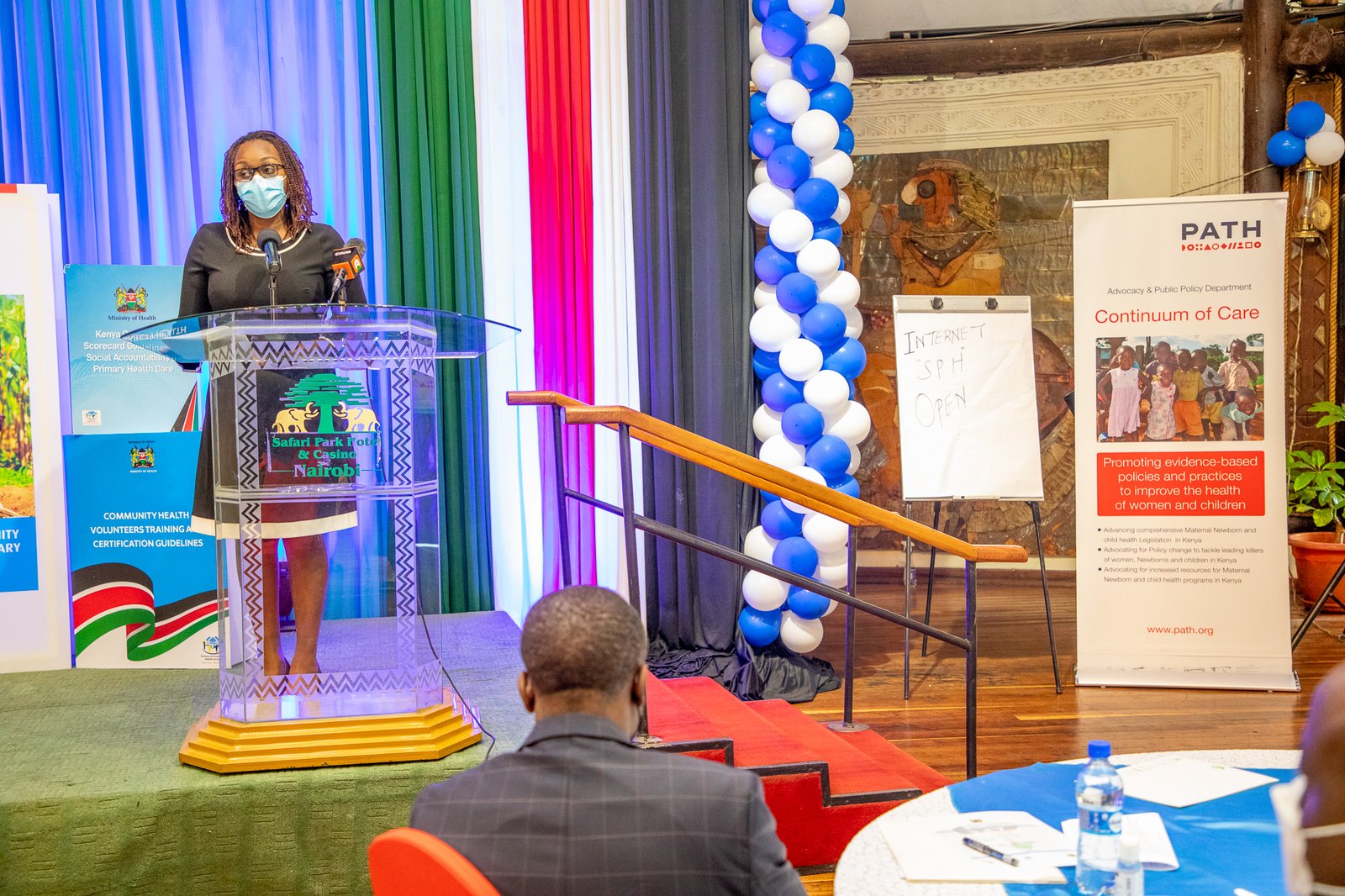During the COVID-19 pandemic, primary health care (PHC) proved to be the “front door” of resilient and responsive health systems—with many countries leaning on PHC systems to provide responsive services, vaccine distribution, and more.
Despite PHC’s heightened importance during the pandemic, clear evidence on the benefits of PHC investment, and commitments African governments made during the signing of the 2018 Astana Declaration, the transformation of primary health care systems has been slow and inconsistent in many countries.
“There is much talk about PHC, but the walk is not there,” said Salim Hussein, MBChB, Head of the Primary Health Care Department with the Kenya Ministry of Health. “There is little funding, so a lot of advocacy needs to be done [to address this].”
“There is much talk about PHC, but the walk is not there.”— Dr. Salim Hussein, Kenya Ministry of Health
Here’s a closer look at two ways PATH’s Advocacy and Public Policy program is working with governments to adopt and implement policies that strengthen PHC systems and the services those systems provide.
1. Bringing services closer to communities through Primary Health Care Networks
Better PHC requires working with communities and individuals to design and deliver services and products that are driven by local needs and preferences.
In Kenya, PATH is assisting the Ministry of Health in rolling out Primary Health Care Networks (PCNs), a “hub-and-spoke” approach toward effective implementation of the Kenya Primary Health Care Strategic Framework 2019–2024.
“The PCN model brings person-centered services closer to communities and helps to ensure the continuity and sustainability of care,” explained Melissa Wanda, PATH Policy and Advocacy Manager in Kenya.
Each PCN is composed of a referral facility and several other primary health care facilities established to deliver access to PHC services for patients and to coordinate with other hospitals. This model improves the overall operational efficiency of the health facilities and emphasizes the needs of the population with the community as the entryway to the health system.
To assist in the development of these PCNs, PATH implemented a peer-to-peer learning approach, bringing together the Department for PHC and Family Medicine officials from eight counties. During the workshop, Garissa and Makueni county officials shared their experiences and lessons learned from efforts setting up PCNs.
Following the workshop, Kakamega, Kisumu, Siaya, and Vihiga county health directors committed to investing in and setting up PCNs within their counties over the following year.
“Moving forward, PATH will continue to support Kenyan counties in expanding PCNs and driving accountability toward their implementation,” said Melissa.

Carolyne Njuguna, PATH’s East Africa Hub Director and Kenya Country Director, speaks at the launch of Kenya’s new primary health care (PHC) policy documents, which will guide the country’s PHC transformation. Photo: PATH/Jacqueline Achieng.
2. Elevating advocate voices through coalition building
Advocates have a vital role to play in engaging policymakers at national and subnational levels, and in holding them accountable for the prioritization of PHC. When groups of advocates work together, their voices grow more powerful and the process of unification brings clarity to challenges, priorities, and solutions.
In Uganda, PATH helped bring together a group of civil society organizations to establish a coalition—the PHC Think Tank—to help advance primary health care. The group, consisting of development partners including Living Goods, ThinkWell, Partners in Population and Development, White Ribbon Alliance, Amref Health Africa, and the Uganda Youth and Adolescents Health Forum, worked together to develop a joint action plan to appeal to the government to prioritize PHC policy, planning, and budget allocation.
“Within the coalition, each organization brought to the table expertise in different PHC thematic areas, thought leadership for PHC during health sector planning and budgeting processes, and value-add through sustained and coordinated action among members and other partners,” explained Esther Nasikye, Advocacy and Policy Manager for PATH Uganda.
The success of the PHC Think Tank is attributed to members’ collaborative efforts, including the development of a set of advocacy messages—which have been used in large-scale advocacy initiatives and public events—and advocating for a national health insurance bill recently passed by Parliament.
The Think Tank has also worked with youth-led and grassroots organizations to develop a PHC community participation advocacy guide to promote community and youth participation in local health systems.
“The advocacy guide provides information about Uganda’s PHC governance, structure, and financing so that community members can better engage in their own health needs and the needs of their community,” said Esther.
The advocacy guide also includes user-friendly resources, such as a needs assessment guide and action plan template, to help drive community participation and engagement in improving primary health care.
Forward together
The success of primary health care will depend upon governments and donors placing adequate and sustained financing behind PHC transformations—especially promising approaches like Primary Health Care Networks. Groups of local advocates calling for change will be essential to ensure PHC’s continued prioritization among so many other needs and interests. Through these collaborative efforts, we can create a healthier future in the places where PATH works.



